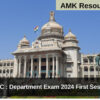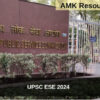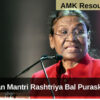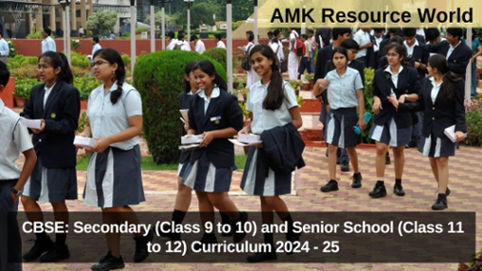| SUPPORT MATERIALS |
Science Diagrams (KM) – Prepared by Mr.Ravi Demashetti. CPHS Mamadapur. Gokak CLICK HERE
Diagrams Booklet as per KSEEB for Annaul Exam CLICK HERE
Diagrams Booklet as per KSEEB for Annual Exam (KM) – Prepared by Ravi Demashetti, CPHS Mamadapur, Gokak CLICK HERE
Chapter Wise (All Chapters) Cryptic Question Papers
| Chapter 01 | Chapter 02 | Chapter 03 | Chapter 04 |
| Chapter 05 | Chapter 06 | Chapter 07 | Chapter 08 |
| Chapter 09 | Chapter 10 | Chapter 11 | Chapter 12 |
| Chapter 13 | Chapter 14 | Chapter 15 | Chapter 16 |
20 SET Solved Question Papers (English Medium) – CBSE Pattern
| Paper 1 | Paper 6 | Paper 11 | Paper 16 |
| Paper 2 | Paper 7 | Paper 12 | Paper 17 |
| Paper 3 | Paper 8 | Paper 13 | Paper 18 |
| Paper 4 | Paper 9 | Paper 14 | Paper 19 |
| Paper 5 | Paper 10 | Paper 15 | Paper 20 |
Objective Question Bank with Answers (All Chapters)
| Chapter 01 | Chapter 02 | Chapter 03 | Chapter 04 |
| Chapter 05 | Chapter 06 | Chapter 07 | Chapter 08 |
| Chapter 09 | Chapter 10 | Chapter 11 | Chapter 12 |
| Chapter 13 | Chapter 14 | Chapter 15 | Chapter 16 |
Science Diagrams (KM) – Prepared by Mr.Ravi Demashetti. CPHS Mamadapur. Gokak CLICK HERE
Science Notes 2020 (Vignyana Lahari) – Prepared by DSERT Bangalore CLICK HERE
Science Most Probable Questions 2020 (Urdu Medium) – Prepared by Shaheen badar CLICK HERE
Science Practice Questions CLICK HERE
Science – Kendriya Vidyala Support Material 2019 – 20 CLICK HERE
Science Workbook (KM) – Prepared by BEO Office & Science Club,Challikere CLICK HERE
Science 1 Marks Questions (EM) – Prepared by Deepa CLICK HERE
Science Simplified Notes (KM) – Prepared by Rahul Ganga, GHS, Dongargoan, Kalburgi CLICK HERE
Science Notes (KM) – Prepared by Rizwan D Navagekara Kanabargi CLICK HERE
Science Mind Maps (EM) – Prepared by Rajesh N Nagure, GHS Kalgurti, Chittapur, Kalburgi District CLICK HERE
Science Notes (KM) – Prepared by Rahul Ganga CLICK HERE
Diagrams Booklet as per KSEEB for Annaul Exam CLICK HERE
Diagrams Booklet as per KSEEB for Annual Exam (KM) – Prepared by Ravi Demashetti, CPHS Mamadapur, Gokak CLICK HERE
- Diagrams Booklet as per KSEEB
- Gist of Chapters (For Quick Glance)
- Numerical Problems (Physics)
- Term 1 & 2 – Kendriya Vidyalaya
- Term 1
- Term 2
| NOTES |
Science Notes – KM (Spoorthi) 2020 – Prepared by DDPI Office, Bangalore South CLICK HERE
Science Notes – EM (Spoorthi) 2020 – Prepared by DDPI Office, Bangalore South CLICK HERE
Science Workbook 2020 (EM) – Prepared by DDPI Office, Chikaballapur district CLICK HERE
Science Workbook 2020 (KM) – Prepared by DDPI Office, Chikaballapur district CLICK HERE
Science Workbook (KM) – Prepared by BEO Office & Science Club,Challikere CLICK HERE
Science 1 Marks Questions (EM) – Prepared by Deepa CLICK HERE
Science Simplified Notes (KM) – Prepared by Rahul Ganga, GHS, Dongargoan, Kalburgi CLICK HERE
Science Notes (KM) – Prepared by Rizwan D Navagekara Kanabargi CLICK HERE
Science Notes (Part 1 – KM) – Prepared by S P Kandagal, GHS Bhimanagada,ilakal Bagalkot district CLICK HERE
Science Notes (Part 2 – KM) CLICK HERE
Science Mind Maps (EM) – Prepared by Rajesh N Nagure, GHS Kalgurti, Chittapur, Kalburgi District CLICK HERE
Science Notes (KM) – Prepared by Rahul Ganga CLICK HERE
| NOTES (KM) |
Prepared by Shashi Kumar B S, GHS Yalekyatahalli, Nelamanagala Taluk, Bangalore Rural District
| REVISION NOTES |
| Chemical Reactions and Equations | DOWNLOAD HERE |
| Acids, Bases and Salts | DOWNLOAD HERE |
| Metals and Non Metals | DOWNLOAD HERE |
| Carbon and its compounds | DOWNLOAD HERE |
| Periodic Classification of Elements | DOWNLOAD HERE |
| Life Process | DOWNLOAD HERE |
| Control and Co ordination | DOWNLOAD HERE |
| How do Organisms reproduce? | DOWNLOAD HERE |
| Heredity and Evolution | DOWNLOAD HERE |
| Light Reflection and Refraction | DOWNLOAD HERE |
| Human Eye and Colourful world | DOWNLOAD HERE |
| Electricity | DOWNLOAD HERE |
| Magnetic Effects of Electric Current | DOWNLOAD HERE |
| Sources of Energy | DOWNLOAD HERE |
| Our Environment | DOWNLOAD HERE |
| Management of Natural Resources | DOWNLOAD HERE |
| NCERT SOLUTIONS |
| Chemical Reactions and Equations | DOWNLOAD HERE |
| Acids, Bases and Salts | DOWNLOAD HERE |
| Metals and Non Metals | DOWNLOAD HERE |
| Carbon and its compounds | DOWNLOAD HERE |
| Periodic Classification of Elements | DOWNLOAD HERE |
| Life Process | DOWNLOAD HERE |
| Control and Co ordination | DOWNLOAD HERE |
| How do Organisms reproduce? | DOWNLOAD HERE |
| Heredity and Evolution | DOWNLOAD HERE |
| Light Reflection and Refraction | DOWNLOAD HERE |
| Human Eye and Colourful world | DOWNLOAD HERE |
| Electricity | DOWNLOAD HERE |
| Magnetic Effects of Electric Current | DOWNLOAD HERE |
| Sources of Energy | DOWNLOAD HERE |
| Our Environment | DOWNLOAD HERE |
| Management of Natural Resources | DOWNLOAD HERE |
| SCIENCE HINTS |
The molecular formula of Butane is C4H10 , The molecular formula of Propene is C3H6, The molecular formula of Butene is C4H8, The molecular formula of Propyne is C3H4, The molecular formula of Butyne is C4H6, The hydrocarbons containing a closed ring of carbon atoms in their molecule are called Carbocyclic hydrocarbons, The general formula of carbocyclic hydrocarbons is CnH2n,
The hydrocarbons in which the carbon chain forms the ring and there is a single bond between the carbon atoms is called Alicyclic hydrocarbons, The molecular formula of Cyclopropane is C3H6, The molecular formula of Cyclohexane is C6H12, The hydrocarbons whose molecules contain a hexagonal ring structure of the benzene type are called Aromatic hydrocarbons, The molecular formula of Benzene is C6H6,
The molecular formula of Toluene is C6H5CH3, The dark brown liquid which occurs at various depths below the surface of earth under the rocks is called Petroleum, The process of decomposing higher hydrocarbons of petroleum fraction into lower hydrocarbons with boiling points by strong heating is called Thermal cracking or Pyrolysis
| MULTIPLE CHOICE QUESTIONS |
| Chemical Reactions and Equations | TAKE TEST HERE |
| Acids, Bases and Salts | TAKE TEST HERE |
| Metals and Non-metals | TAKE TEST HERE |
| Carbon and its Compounds | TAKE TEST HERE |
| Periodic Classification of Elements | TAKE TEST HERE |
| Life Processes | TAKE TEST HERE |
| Control and Coordination | TAKE TEST HERE |
| How do Organisms Reproduce? | TAKE TEST HERE |
| Heredity and Evolution | TAKE TEST HERE |
| Light Reflection and Refraction | TAKE TEST HERE |
| Human Eye and Colourful World | TAKE TEST HERE |
| Electricity | TAKE TEST HERE |
| Magnetic Effects of Electric Current | TAKE TEST HERE |
| Sources of Energy | TAKE TEST HERE |
| Our Environment | TAKE TEST HERE |
| Management of Natural Resources | TAKE TEST HERE |
| SCIENCE HINTS |
CNG stands for Compressed Natural Gas, The chief constituent of petroleum gas is Butane, The chief constituent of natural gas is Methane, LPG stands for Liquid Petroleum Gas, LPG is called as efficient fuel because it has high calorific value, The gases liberated during combustion are called Exhaust gases, The test conducted to determine the percentage of carbon monoxide released by an automobile is called Emission test,
The alkene that contains four carbon atoms in its molecule is Butene, The alkyne that contains five carbon atoms in its molecule is Pentyne, The simplest aromatic hydrocarbon is Benzene, A toluene derivative which is used as an explosive is TNT, TNT stands for Trinitrotoluene, The most poisonous gas present in the automobile exhaust is Carbon monoxide, The smelling agent added to LPG to facilitate quick detection of leakage is Ethyl Mercaptan, The two classes of hydrocarbons having the same general formula are Alkenes and Acyclic hydrocarbons, The number of carbon atoms in the molecule of Ethane 2, The chief constituent of LPG is Butane, The process of cracking or higher hydrocarbons into shorter hydrocarbons is called Pyrolysis, The thermal cracking of octane yields Hexane and Ethene, The naturally occurring compounds like oil and fats are called Lipids, In 2p level of carbon there are 2 unpaired electrons
The first member of aromatic hydrocarbon is Benzene, Benzene was first isolated by Michael Faraday, The structure of Benzene was proposed by Kekule in 1865, The instrument used to determine the amount of carbon moxide released is called Gas Analyzer, The position of carbon in the periodic table is 2nd period and 14th group, The molecular formula of normal butane and Isobutane is C4H10,
In normal state the valency of carbon is 2, In excited state the valency of carbon is 4, The acidic impurities present in the petroleum are removed by washing it with diluteH2SO4 and NaOH, The temperature at which the petroleum cracking is done is 6500C, The byproduct obtained during petroleum cracking is Alkenes, The another name of Methane gas is Marsh gas, The hydrocarbon used in the preparation of explosives is Toluene
| POWER POINT PRESENTATIONS |
| Chemical Reactions and Equations | DOWNLOAD HERE |
| Acids, Bases and Salts | DOWNLOAD HERE |
| Metals and Non Metals | DOWNLOAD HERE |
| Carbon and its compounds | DOWNLOAD HERE |
| Periodic Classification of Elements | DOWNLOAD HERE |
| Life Process | DOWNLOAD HERE |
| Control and Co ordination | DOWNLOAD HERE |
| How do Organisms reproduce? | DOWNLOAD HERE |
| Heredity and Evolution | DOWNLOAD HERE |
| Light Reflection and Refraction | DOWNLOAD HERE |
| Human Eye and Colourful world | DOWNLOAD HERE |
| Electricity | DOWNLOAD HERE |
| Magnetic Effects of Electric Current | DOWNLOAD HERE |
| Sources of Energy | DOWNLOAD HERE |
| Our Environment | DOWNLOAD HERE |
| Management of Natural Resources | DOWNLOAD HERE |
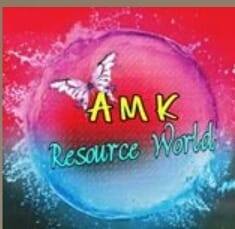



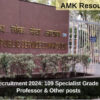
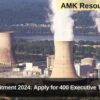






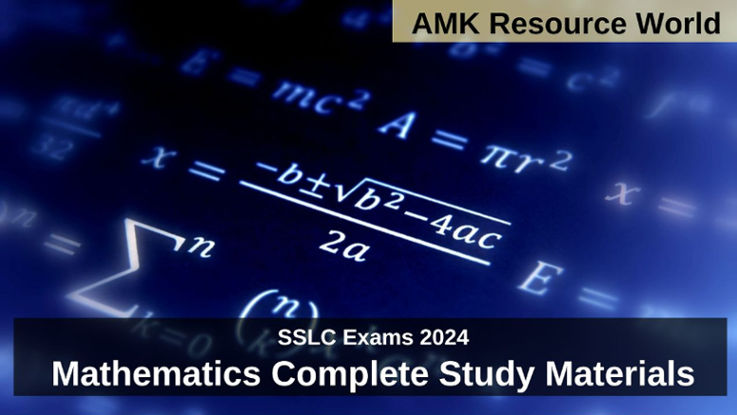





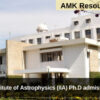












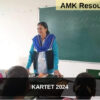

![CUET PG 2024 results announced, Download your Score Card Common University Entrance Test [CUET (PG) 2024]](https://amkresourceinfo.com/wp-content/uploads/2023/12/imresizer-1703677752615-100x100.jpg)



